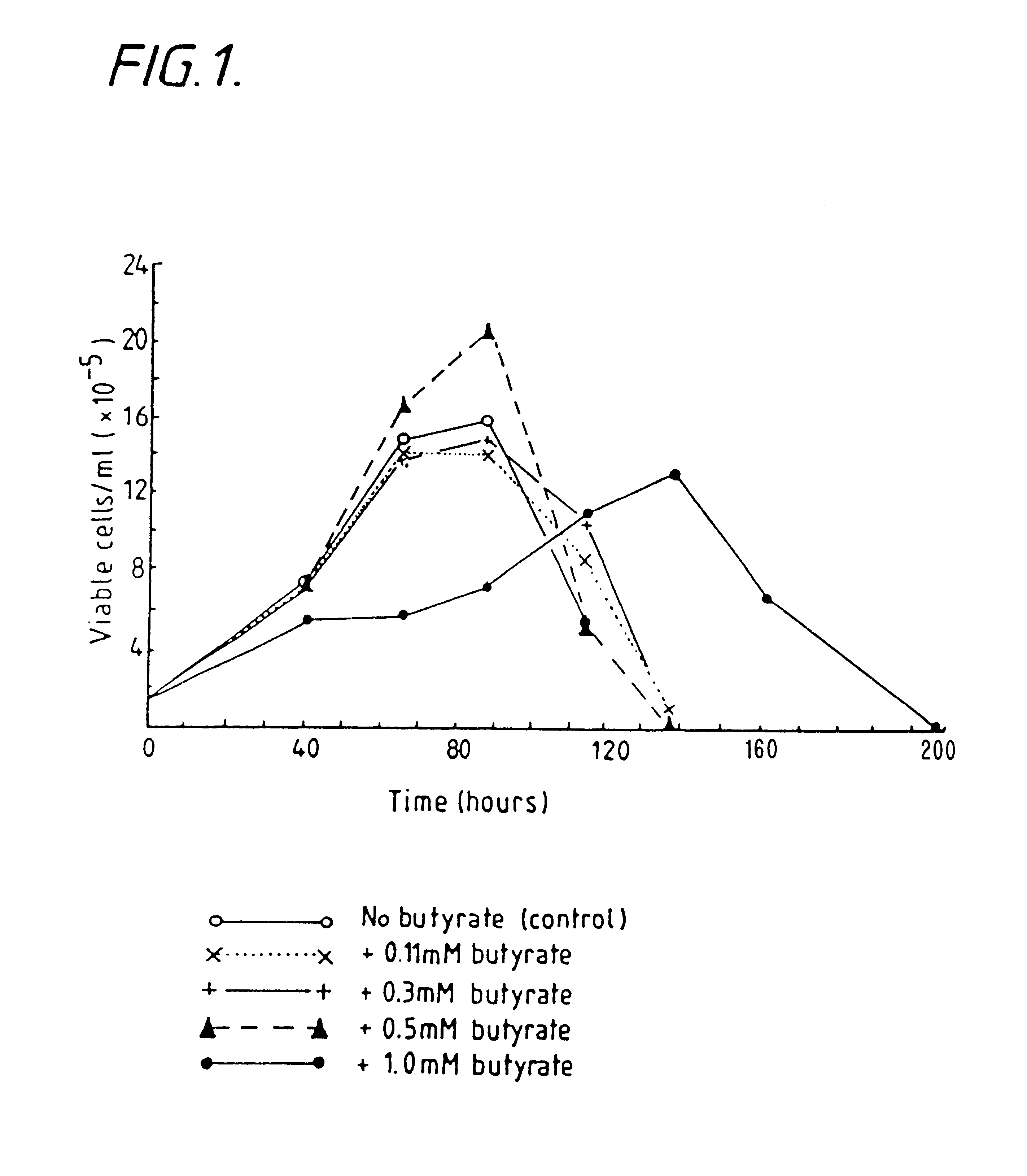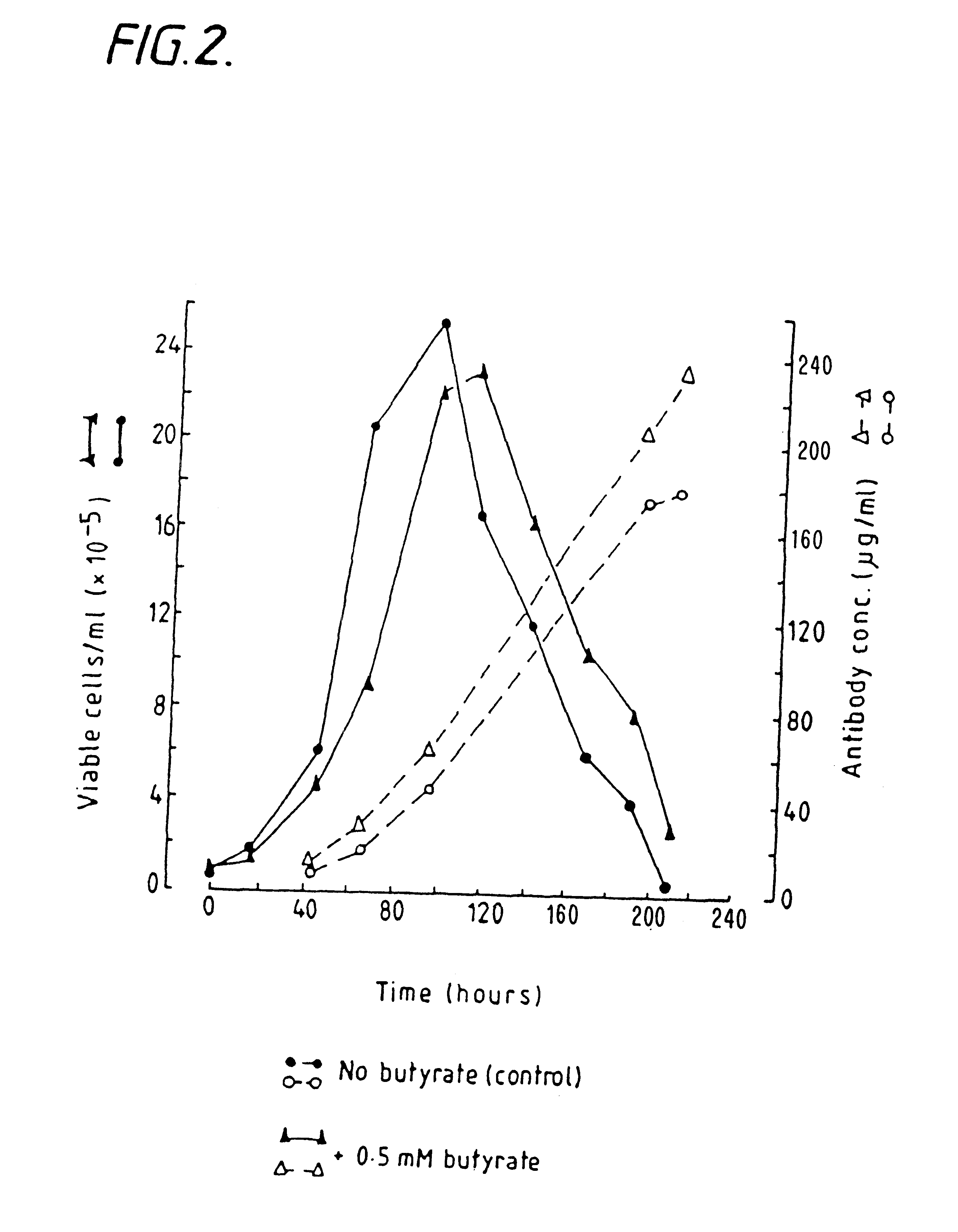Production of proteins by cell culture
a cell culture and protein technology, applied in the direction of immunoglobulins, peptides, injected cells, etc., can solve the problems of high research and development and production costs, high equipment requirements, and high cost of cell culture for commercial production of cellular products for diagnosis and therapy
- Summary
- Abstract
- Description
- Claims
- Application Information
AI Technical Summary
Benefits of technology
Problems solved by technology
Method used
Image
Examples
example 2
Butyrate Enhanced Antibody Production in Hybridoma Cells Cultured in Serum Supplemented Medium
The protocol for this experiment is similar to that outlined in Example 1, except that the cells were cultured in Dulbeccos Modified Eagles Minimum medium supplemented with 10% foetal calf serum.
Table 2 shows the effects on antibody production of adding sodium butyrate.
example 3
Butyrate Enhaniced Antibody Production in Hybridoma Cells Cultured in Airlift Fermenters
NB2 / 19 hybridoma cells were cultured in suspension in airlift fermenters (Birch et al Trends in Biotech, Vol. 3 No.7, pp 162-166), (5 litres), in DHEM serum-free medium containing glutamine, transferring, albumin, insulin and the like. Hybridoma cells were innoculated into the fermenter at a cell density of 1.times.10.sup.5 cells / ml.
Sodium Butyrate was added to the fermenters at a concentration of 0.5 mM at the time of inoculation of the hybridoma cells into the fermenter.
Controls were not treated with sodium butyrate. Samples were periodically taken as described in Example 1.
The effects of butyrate on cell growth and antibody production are shown in FIG. 2.
example 4
Enhanced Production of Recombinant Human Growth Hormone in Mammalian Cells using Sodium Butyrate
The molecular biology of adherent CBMG human growth hormone producing cells has been described (G. N. Pavlakis et al PNAS (USA) Vol. 80 pp 397-401 (1983)).
CBMG cells were inoculated into tissue culture flasks at a density of 0.7.times.10.sup.5 cells / cm.sup.2 in Dulbeccos Modified Eagles Minimum (DMFM) supplemented with 10% foetal calf serum.
After the cells in culture had grown to confluency, the DMEM serum supplemented medium was replaced by serum-free DMEM maintenance medium. Sodium butyrate was added at 1 mM and 5 mM after transferring the cells from serum supplemented medium to maintenance medium. Levels of human growth hormone in the culture supernatant were measured after 48 hours by immunoradiometric assay. The results are shown in Table 3.
PUM
 Login to View More
Login to View More Abstract
Description
Claims
Application Information
 Login to View More
Login to View More - R&D
- Intellectual Property
- Life Sciences
- Materials
- Tech Scout
- Unparalleled Data Quality
- Higher Quality Content
- 60% Fewer Hallucinations
Browse by: Latest US Patents, China's latest patents, Technical Efficacy Thesaurus, Application Domain, Technology Topic, Popular Technical Reports.
© 2025 PatSnap. All rights reserved.Legal|Privacy policy|Modern Slavery Act Transparency Statement|Sitemap|About US| Contact US: help@patsnap.com



